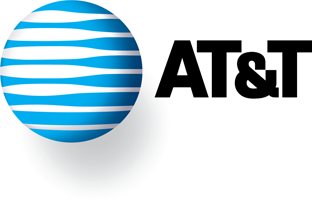16.07.2013How interest in AT&T’s Next plan could boost new and old iPhone sales
As iPhone sales growth has come back down to earth, Apple has been experimenting with ways to increase sales to emerging smartphone markets and those who’ve never purchased an Apple device before. But here in the U.S., new, non-traditional wireless subscription plans from the country’s largest carriers may be yet another way for Apple to turn the crank faster on iPhone upgrades and increase older device sales.
Over the last week, first T-Mobile,, then AT&T, introduced new plans for upgrading phones. Instead of having to wait until the end of a two-year plan to upgrade to a new device without penalty, T-Mobile’s Jump and AT&T’s Next are giving customers the option to upgrade to a new phone (or tablet, in AT&T’s case) every six months or once every year, respectively.
As my colleague Kevin Fitchard explains in detail, these new plans may or may not be a good deal for you, depending on how much attention you want to pay to the age of your phone. There’s also a lot of potential for confusion.
However, the idea of getting to choose a new phone after six months or once a year on its surface does sound mighty appealing. It may be especially so for people who like to have the latest flagship device their carrier offers. Several times a year, a new Android smartphone carrying the mantle of best new device seems to appear, so the six-month trade-in may make sense for those customers who want the newest top-of-the-line smartphone.
AT&T’s yearly upgrade plan seems perfectly tailored to Apple customers, however. Traditionally, Apple only upgrades the iPhone once per year. But in the U.S. at least, the majority of wireless customers subscribe to two-year plans with prohibitively high early-termination fees that kick in if they want to buy a new phone before the contract is completed. Depending on the progress AT&T makes converting existing customers or attracting new ones to the Next plans, that could put an end to the two-year-plus upgrade cycle most U.S. customers are used to and end up increasing iPhone sales.
There has been some backlash against AT&T’s Next — some are calling it “a huge ripoff.” And if too many potential Next customers agree with that assessment, then Apple may not end see an uptick in iPhone sales from it.

If AT&T is successful, though, there’s another potential benefit to Apple here too: the carriers require the older device to be in working condition and turned in once a customer chooses to upgrade to a new phone. That means T-Mobile and AT&T can either recycle them or — more likely — resell the device to other customers, or even back to Apple which could in turn resell it.
Apple has long offered older, refurbished devices. But sales of older models are actually a significant part of the company’s plan to attract new Apple and iPhone customers in places like China, India and other markets where the iPhone brand has a lot of cachet but where the latest model devices are a bit out of the price range of the average shopper.
If more customers begin turning in year-old or six-month-old iPhone 4S or iPhone 5 devices, that only increases the number of older devices that Apple could potentially turn around and resell to more price-conscious smartphone shoppers.
And even if Apple doesn’t get to count all refurbished sales, any new customer introduced to Apple also gets introduced, as Cook likes to put it, “into the ecosystem” of iTunes, the App Store and potentially future hardware products.
back
 If AT&T is successful, though, there’s another potential benefit to Apple here too: the carriers require the older device to be in working condition and turned in once a customer chooses to upgrade to a new phone. That means T-Mobile and AT&T can either recycle them or — more likely — resell the device to other customers, or even back to Apple which could in turn resell it.
If AT&T is successful, though, there’s another potential benefit to Apple here too: the carriers require the older device to be in working condition and turned in once a customer chooses to upgrade to a new phone. That means T-Mobile and AT&T can either recycle them or — more likely — resell the device to other customers, or even back to Apple which could in turn resell it.